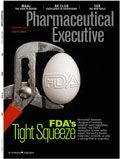The Fruits of Comparative Effectiveness
New CER tools grant payers the evidence they need to control drug costs
Despite the scope and breadth of the new US health reform law, it contains little that observers see as likely to curtail the rising cost of care. This conclusion may be premature; the bill passed by Congress (PL 111-148) in March includes significantly increased funding for comparative effectiveness research (CER). This comes at the same time as a range of initiatives from private payers to drive a tighter link between evidence comparisons and treatment decisions. For Big Pharrma, CER will require a stronger focus on price and access, as it changes the scenarios which must be evaluated when determining what drugs and what evidence programs to fund. Early-stage intervention is critical, as medicines that might be viable if launched today (with a particular evidence package) may fail commercially in the environment we will be faced with five years down the road.
Recognizing that CER will affect portfolio assets unevenly, developing a framework for assessing how review of clinical and economic evidence in a post-marketing context may affect commercial success is key. The following lends examples of how to apply the framework to particular strategic portfolio management decisions and integrate CER assessment into portfolio planning and forecasting activities.

Getty Images / Gary S Chapman
Evolution of CER: New Opportunities and Risks
Comparative effectiveness research in the US has entered a new phase with the establishment of the Patient-Centered Outcomes Research Institute (PCORI). This element of the healthcare reform law follows the previous allocation of $1.1 billion for CER in last year's stimulus bill. The law places limits on the use of formal cost-effectiveness measures, particularly the cost-per-QALY metric favored by the UK's National Institute for Health and Clinical Excellence (NICE). Nevertheless, in Section 6301 of the reform law, PCORI is given freedom to set a research agenda based on a broad set of criteria, which includes "impact on national expenditures." Inevitably, the budget impact associated with innovative therapies will play a role in the priorities for CER.
The impact this new research agenda will have on reimbursement and marketplace outcomes is not yet clear. With respect to Medicare, limits on cost-based decision making remain in place, and experts such as Louis Jacques, director of the Coverage and Analysis Group in CMS's Office of Clinical Standards and Quality, suggest that research generated by PCORI will not be a "game-changer." However, some analysts have proposed that Medicare link reimbursement with comparative effectiveness determinations, making payments equal for services with evidence of comparable clinical effectiveness and higher for those with evidence of superior clinical effectiveness.
The use of evidence of comparative clinical effectiveness to inform healthcare decision making has advanced furthest in oncology. The National Comprehensive Cancer Network (NCCN) is currently piloting its Comparative Therapeutic Index (CTI), categorizing products as "preferred," "appropriate," or "acceptable." Given the influential nature of the NCCN guidelines, this approach to implementing comparative effectiveness evaluations may have significant impact on treatment decisions.
In other therapy areas, the private sector has moved more aggressively than statutorily limited federal Medicare administrators. WellPoint is moving to an outcomes-based formulary process, which includes explicit determination of whether a drug is favorable, comparable, or unfavorable compared to another drug. Pharmacy benefit managers such as Medco are funding comparative studies on their own to help drive coverage decisions. Most recently, US private payers have begun to adopt indication-based tiering, reflecting inputs from comparative effectiveness research, in which patient copayments are used to limit usage to specific indicated patients. A recent survey of 20 managed care organization pharmacy directors revealed that a few have already linked tier status to indication, as will several more in 2011. Therapeutic areas with multiple biologics on market, and an array of indications, are scenarios where this approach is likely to emerge first.
Looking forward, it remains unclear how rapidly and to what degree decisions such as these will influence commercial success in both US and global markets. Prudent innovators, though, will consider scenarios in which comparative effectiveness decision-making is adopted widely and aggressively. With the right evidence, this environment is one in which products can achieve greater success with potentially less post-market commercial investment. But the risk of losing ground for lack of appropriate comparative evidence will be high in those areas facing the greatest scrutiny.
In our observation, the keys to adapting CER decision making at biopharmaceutical companies include:
» Understanding what CER is—and is not—and building scenarios for how it may evolve to influence specific areas of medicine relevant to the company;
» Creating a framework for semiformal assessment of the CER impact on portfolio molecules—primarily to foster shared understanding across scientific and commercial groups and to stimulate consideration of development options at early stages; and
» Integrating CER risk/opportunity into more formal portfolio and financial decision making—once an agreement has been reached on the importance of comparative effectiveness research.
Adopting a Framework for CER Assessment
Although the way in which comparative effectiveness evidence will be applied remains uncertain, companies will benefit from a systematic mechanism for forcing the dialogue into both early and later stages of pipeline review. While a strategy to pursue a broad market indication with limited comparative data at launch may be appropriate in some cases, the question must be asked and it must be asked early. For example, the targeted cancer therapeutic Erbitux found sustained marketplace success only after the dissemination of data demonstrating superior efficacy in an identifiable subgroup of patients with the wild-type KRAS mutation in their tumors. A framework for considering these issues early—both at the category level and the individual product level—will prove increasingly useful.
The likelihood of evidence review and other forms of comparison that may affect a product's commercial success rely on two factors: 1) the potential budget impact of the therapy in question and 2) the availability of comparable alternative therapies. The former creates the incentive for payers to measure, even if cost is kept nominally out of the equation, and the latter creates the opportunity for action. Thus we see that chronic and highly prevalent diseases such as hypertension, with many available therapies showing some degree of efficacy, have already been the subject of comprehensive evidence review from bodies such as AHRQ. However, because the generic mechanism has created a vehicle for cost control in mature and relatively undifferentiated categories, the practical focus of much evidence review will be associated with the diseases experiencing the most innovation, where newer therapies are expanding treatment at higher cost.
Manufacturers can characterize the CER sensitivity of the environment along these two dimensions: Threatened budget impact can be quantified by current market size and volume of innovation activity, while the availability of comparable alternatives can be observed in the number of available drugs and the degree to which generics are available. (Figure 1, illustrates the positioning of a range of diseases within major categories.)
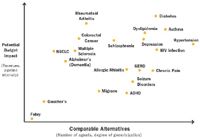
Figure 1. CER Assessment Framework Applied to Selected Competitor Groupings
In general, the further "north" or "east" on the graph a disease may fall, the more important the innovator's comparative effectiveness strategy will be. The need to demonstrate superiority to standard of care, a focus on health outcomes rather than intermediate measures, and selection of patient subgroups in which evidence is stronger are all hallmarks of development requirements in these diseases. Areas such as diabetes and rheumatoid arthritis (RA) have become intensely demanding for innovators. Recent launches such as Onglyza in diabetes and Simponi in rheumatoid arthritis have resulted in slower-than-anticipated uptake. These products have good data but lack the comparative superiority that is becoming essential to gain share over incumbents in these categories. Not surprisingly, biologics for inflammatory diseases such as RA also topped IOM's list of priority drug classes for comparative effectiveness review last year. At the other end of the spectrum, certain orphan diseases such as Gaucher's and Fabry disease present a combination of limited potential budget impact and an absence of alternatives. Both factors offer greater insulation from the effects of CER initiatives.
In general, companies can anticipate the most intense comparative evidence requirements in the "northeast" of the framework and the most rapid escalation in comparative evidence requirements (with the potential for unpleasant surprises) in the "northwest" quadrant (see Figure 2).
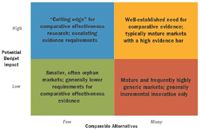
Figure 2: CER Assessment Framework Implications for Developers
Applying the CER Assessment Framework
The framework of potential budget impact and availability of comparable alternatives can be applied to an individual indication or competitive grouping with adjustment for the narrower frame of reference. Within an individual area, potential budget impact is a function of drug cost relative to others in the group and of the number of patients targeted, which can vary by product given potential subgroup strategies and label indication. The availability of comparable alternatives within a single category varies as a function of the product's level of differentiating evidence relative to the group.
Figure 3 illustrates this ranking for colorectal cancer (CRC). The anti-EGF monoclonal antibody therapies Erbitux and Vectibix initially faced the unfortunate combination of high potential budget impact and weakly differentiated evidence. However, these therapies improved differentiation and reduced potential budget impact through evidence of effectiveness in the subgroup of CRC patients with KRAS wild-type tumors. Although this limited the total available market for the products, it greatly improved the commercial results.
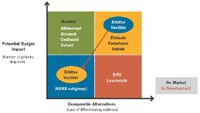
Figure 3: Application to Colorectal Cancer Pipeline Products
Looking forward, a number of products currently in Phase III CRC trials (aflibercept, brivanib, cedarinib, and Sutent) could face particularly rigorous evidence review. Already, despite its strong evidence, Avastin has experienced the effect of heightened payer scrutiny and the lack of a subgroup in this competitive category, as evidenced by markedly reduced revenues in EU5 markets (UK, France, Germany, Spain, and Italy) relative to the US and a negative decision from NICE.
Without a successful subgroup strategy and/or compelling demonstration of outcomes superiority in the broad population, would-be entrants in categories such as CRC or RA face the threat of experience like that of Johnson & Johnson's Simponi. Recent evaluation of an antithrombotic agent in clinical development revealed that, although efficacy projections based on early trials appear able to meet regulatory hurdles for safety and efficacy, superiority to current standard of care is likely to be demonstrable only in a subset of high-risk patients (see sidebar). The company's clinical and commercial strategy had been to aim at the broad indication for which the product will likely be approvable and comparable to existing agents. But in that broad indication the product likely would not fare especially well under a comparative effectiveness assessment. Five years ago this might have been the right strategy for US commercialization, but this no longer appears to be the case for a program in Phase II today.
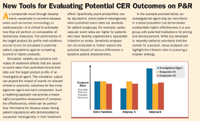
New Tools for Evaluating Potential CER Outcomes on P&R
Most organizations have recognized the need to approach these markets with a greater level of evidence, but fewer are using tools like this to force systematic consideration. Eli Lilly has been an early adopter in considering CER; its executive in charge of that area, Mark Berger, has written that "the companies that survive and thrive in this new environment will be those that embrace comparative effectiveness research."
Integrating Risk and Opportunity
While the challenges of comparative effectiveness are increasingly recognized, a consensus approach for integrating these risks into formal portfolio and financial planning has not emerged. Assessment of risk for one manufacturer, a leading global company with a broad portfolio in the US market, revealed a 10 percent swing in revenue expectation (see Figure 4) associated with CER scenarios and also highlighted the opportunity to enhance portfolio value with a more proactive evidence stance, though this implied dropping marginal programs to enable the incremental investment.
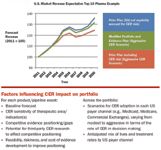
Figure 4: CER Expected Revenue Impact, Large Pharmaceutical Portfolio
Portfolio realignment is still a work in progress in this organization, as individual programs are evaluated in detail and the likelihood of an "aggressive" CER scenario is weighed against the cost (and risk) of developing the evidence needed to counter it.
While the decisions are difficult, the direction is clear. Even if a Republican-controlled Congress in 2011 were to withdraw funding from the newly mandated PCORI, comparative effectiveness is becoming firmly entrenched in the commercial payer market in the US. The companies adapting their portfolio decision making to this new reality will have the best chances of thriving in it.
Article authors include Managing Principal Edward Tuttle (etuttle@analysisgroup.com); Vice President Anita Chawla, Ph.D.; and Managers Dave Nellesen, Ph.D., and Justin Works of economic and strategy consulting firm Analysis Group, which provides strategic consulting to clients in the biopharmaceutical industry
Is Artificial Intelligence a ‘Product’? Products Liability Implications for AI-Based Products
April 10th 2025As the physical products we use evolve to become increasingly complex, traditional products liability frameworks may not always fit to provide remedies for harm that can result from using novel product types.
